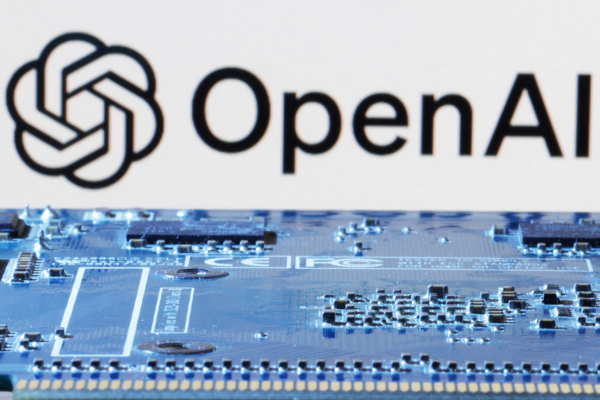Embracing modernisation, revolutionising the lending eco system with digital transformation technology
Sponsored by Madiston
If you ask people working in today’s lending space, they’ll probably tell you that, despite the burgeoning lendtech and proptech markets, technology doesn’t yet offer the whole solution to the sector’s complex needs. While there are many systems that are engineered to address specific aspects of lending and borrowing, it seems they don’t serve the whole lending ecosystem.
What are the elements missing from systems now and how will technology fill those gaps?
In my own discussions with people across the lending and borrowing industry, many common issues frequently came up. So let’s look at just some of the issues highlighted – and how, or whether, they can be solved by the intelligent application of technology.
Transparency and collaboration
Transparency was a priority for many in the lending space. With so many potential participants, such as lending firms, borrowers, sellers, investors, solicitors, sponsors and brokers, the lending ecosystem is highly interdependent, relying on a team to drive successful outcomes from each transaction. Effective collaboration is vital, particularly in high-value and asset-backed lending. Transparency breeds trust – sharing information, contributing to a shared objective.
How should the digital lending system achieve this? Firstly, to foster collaboration, there needs to be inclusion. All key participants should be given access to the system and, with intelligent routing through that system, have everything they need based upon their role or profile. Lenders/investors, solicitors and borrowers, for example, can all be participants in the same transaction, but need to be able to see different aspects of the same project. The system needs to provide each of them with the information they need to complete their role efficiently, inform their decision-making, show them the steps they and others need to take, and give them an overview of the whole transaction so they can see the impact of their actions.
When the system has these elements in place, with dashboards and tasks tailored specifically for the profile or role of each participant and shown in the context of the whole shared task, transparency is evident. Transparency builds trust and co-operation flourishes.
Then there is more to consider…
Multiple lending models
Diversifying portfolios mean lending firms are striving to provide more opportunities for investors, offering a range of risk profiles and different levels of commitment in a variety of different asset types.
In property lending, for example, lending firms could offer buy-to-let, bridging or development loans. In consumer lending the solution could be buy-now-pay-later or employee loans. More lenders are now looking to place their funds in specific types of project – perhaps limiting their funds to environmentally friendly ventures. Each of these come with their own regulatory and logistical challenges, but they are all opportunities for those in the lending ecosystem.
To maximise opportunities, our perfect system would need to quickly define many different styles of loans, matching lender and borrower appetite in the market at any time. Open Banking would play a role in data gathering for risk analysis, and decision engines would need to be in place to ensure that credit risk is managed correctly, whatever the lending model.
Maximised liquidity, multiple participants
While institutions still reign supreme in most transactions, property lending is an area where democratising investment has really taken hold. Retail investors are participating more and more in the funding of property developments. The benefit of that is that more cash is available to developers, that would otherwise be sitting in low-interest savings accounts, so retail investors may now reap the rewards previously enjoyed only by those institutional investors.
The challenge increases for technology here because, instead of a loan being “one-to-few” (one developer, one or two funding institutions), it could now be “one-to-many” (one developer/borrower and many hundreds or thousands of investors/funders). In this case, it is only with robust, highly automated technology that the complexity, and sheer volume, of microtransactions can be managed. The system would also need to be robust in its processing to ensure compliance in heavily regulated areas such as lending with retail investors’ funds (see Compliance below).
When focusing on liquidity, secondary markets also featured heavily as a requirement. Investors, particularly institutions, could resell their investment, restoring capital reserves and avoiding the need to fundraise again and again for the next project. This function would need to be available in our perfect system.
Complexity
Aside from the complexity in defining lender and borrower products and managing multiple participants, concern has also been raised about the complexity of loan servicing. Open Banking can ease the payment processing aspects and, with permissioned access to borrower bank accounts, data for credit decisioning and underwriting is greatly enhanced. But by the very nature of lending, that still leaves many hurdles to overcome mid-term. A request from a borrower to restructure the loan, extend the term, repay early or take a payment holiday all add to this complexity, and the list of possibilities is practically endless.
Redefining loans mid-term creates major complexity in the system, particularly for loan servicing, valuations and revaluations. This is where digital lending technology really needs to come into its own, enabling these changes to happen without hours, days or even weeks of disruption and cost-inducing delays. These changes need to be automated within the system, with robust approvals and communication across parties.
Timing
Our discussions often focused on the need to drive transactions through quickly to maximise returns. For the system to work for the whole lending ecosystem, it should be a tool that helps maintain momentum and keeps each transaction, large or small, on track.
Automation within the system should monitor activity, prompting action by anyone in the ecosystem when something is due, triggering follow-up when a response is not received, distributing information when and where it is needed and issuing alerts where there are risks of delay or failure. Precise, timely information enables quick and accurate decisions. Intelligent routing drives the next action, and automation means less people-time is absorbed by mundane tasks that can be done more efficiently by technology.
This means that people throughout the ecosystem can be focused on areas when their skills are most in demand, achieving better outcomes more quickly.
Compliance
Regulation is an ever-increasing aspect of life, particularly where lending models include “unsophisticated” investors – those new to lending as an investment, who are not high net-worth or institutional. Or, indeed, potentially vulnerable borrowers in rapidly growing areas such as buy-now-pay-later, which is a sector looking forward to new regulation.
Whether the regulatory concern related to ID verification, know-your-customer (KYC), anti-money laundering (AML), financial promotions, compliance whilst scaling-up, controls for access, authority levels and approvals or reporting and management, the subject of compliance cropped up everywhere in my discussions.
The answer is to have compliance built in to automated processing, so that no matter the scale, compliance is consistent. Dual approvals, audit trails, drill-down enquiries, asset and client money reconciliations and, most importantly, proof of compliance, should be standard in any digital lending system.
Cost of ownership
You only have to look at some of the key players’ reported accounts to see how much is spent on technology. Launch costs are eye-watering enough but it is the ongoing costs that cause concern. All that we have discussed above inevitably leads to the constant need to add functionality to systems, change regulatory pathways and respond to market opportunities. With inflexible systems, this means complex developments or buying in add-on solutions all cutting into margins. Where the development is done in-house, adding people is expensive, as are the ancillary costs of employment.
Maximum flexibility is the answer, with low-code solutions that can be adapted quickly and easily as the need arises. Low code solutions enable the firms using it to customise and configure the software to their ever-changing business models, simply by changing some of the many settings available. This is cheaper, faster and less risky than commissioning developers to change the software code itself. We have talked about automation; that should mean more can be achieved with the same staffing levels. Our optimum lending solution would be designed for flexibility.
In summary
Progress across the lending community is being made, but lendtech and proptech have further to go to deliver for all participants.
Systems needed to be more flexible so projects that represent good investment opportunities can be included, even when they have extra layers of complexity.
Automation and intelligent routing should provide the tracks on which the transactions run, ensuring speed, accuracy and compliance.
Above all, the perfect lending system should be a tool for collaboration across the ecosystem, sharing information and building trust, maintaining momentum and encouraging action… and so benefiting all involved in this ever-evolving industry.
Discover Madiston’s leading solution providing software technology and the team behind its creation
Book exploratory call here.
By Wesley Brooks, Director Global Business Development, Madiston


Business Reporter Team
Related Articles
Most Viewed
Winston House, 3rd Floor, Units 306-309, 2-4 Dollis Park, London, N3 1HF
23-29 Hendon Lane, London, N3 1RT
020 8349 4363
© 2024, Lyonsdown Limited. Business Reporter® is a registered trademark of Lyonsdown Ltd. VAT registration number: 830519543





